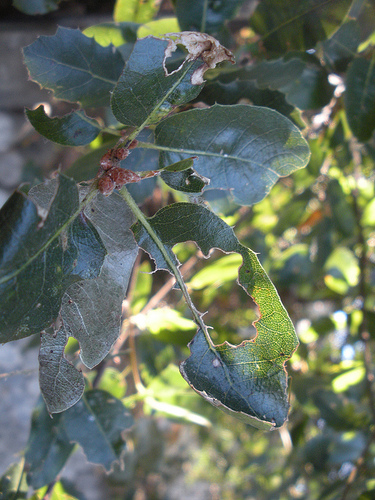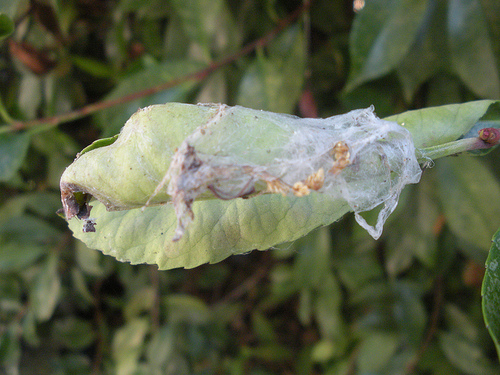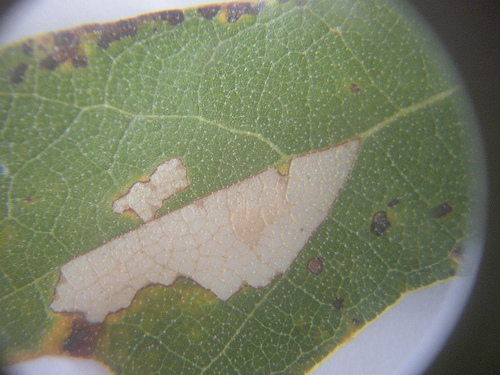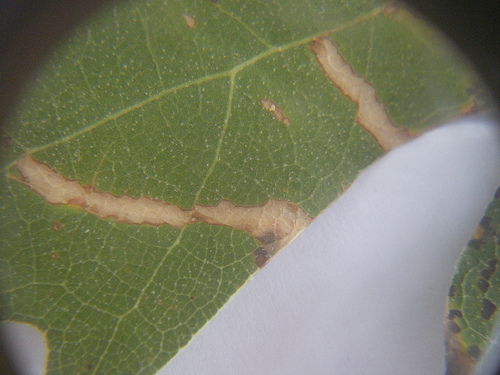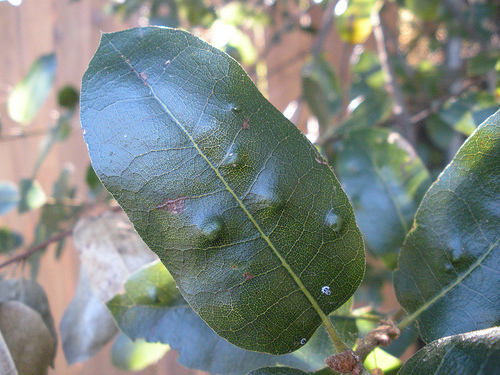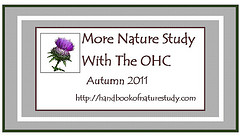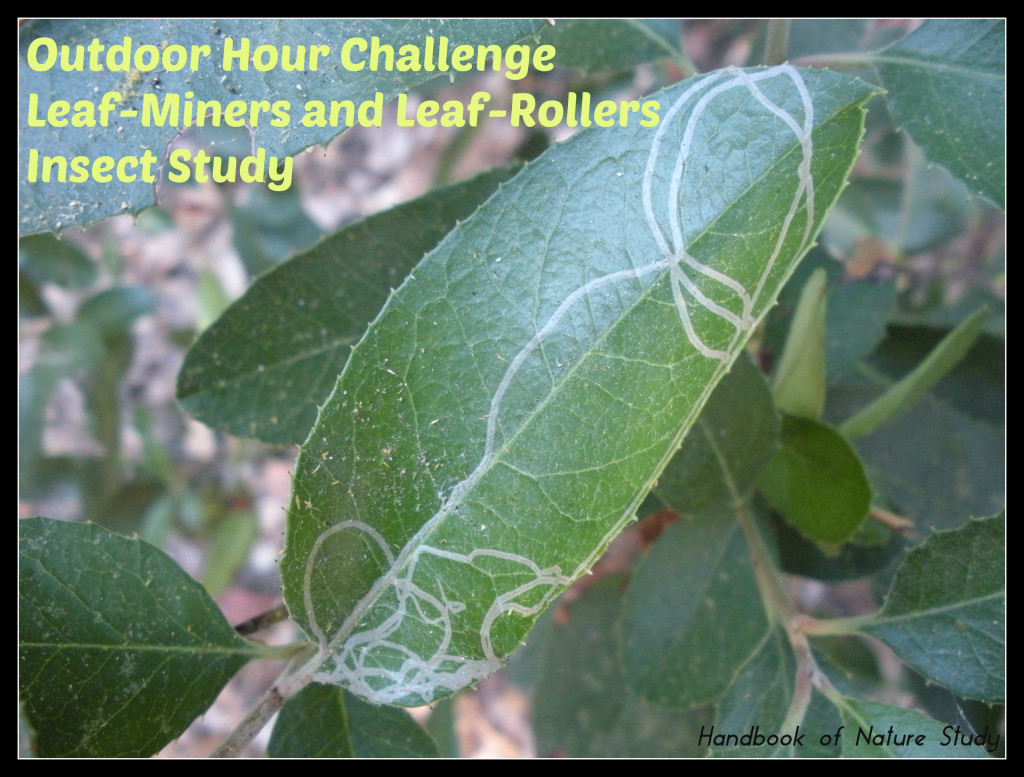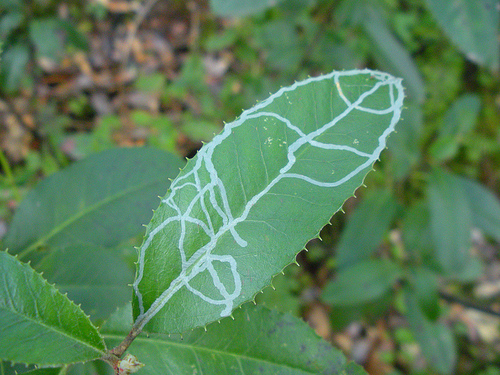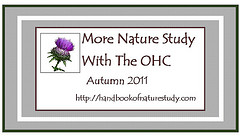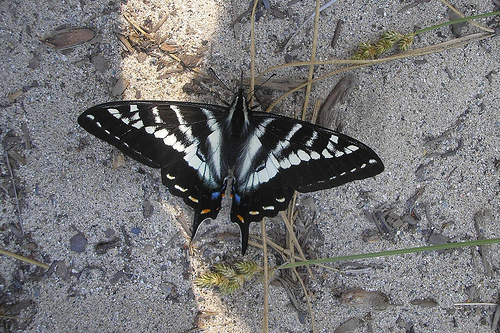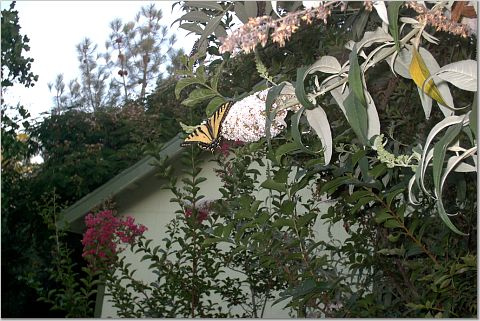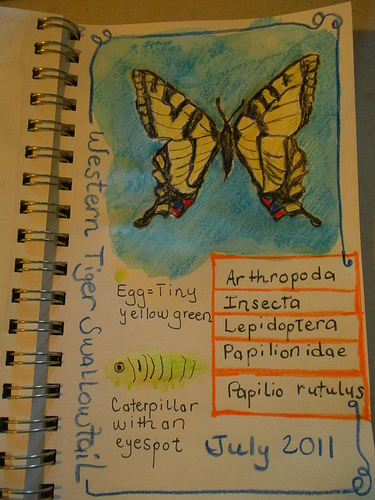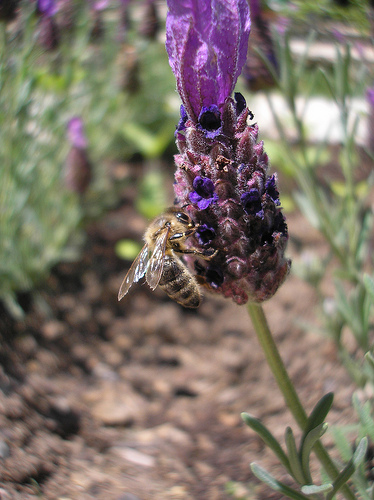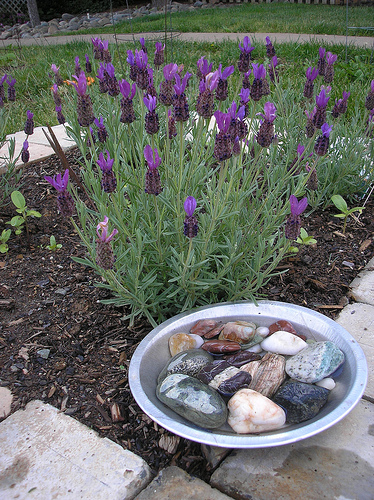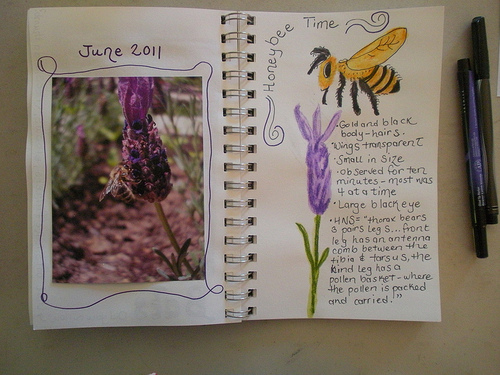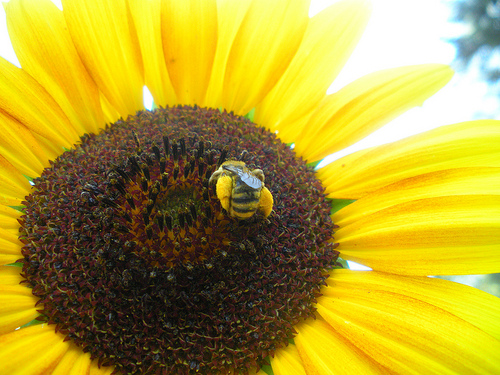We found quite a bit of leaf damage on the oaks in our backyard…nothing that really looked like leaf-miners though. We looked carefully which is part of what this challenge (More Nature Study #2 Leaf-Miners and Rollers) was all about.Taking time to really look and see the leaves opens up lots of interesting thoughts and ideas. Who caused the damage? Were they nibbled by insects or something else like the birds that frequent our yard?
The preparation work from the Handbook of Nature Study really helped us with this challenge.
We went around to the garden side of the yard and started to look at the shrubs there and we think we found several leaves that had been rolled up by insects. This one looks close to what we were looking for so we are going to assume it is our subject for this challenge. Amazing that I never noticed this leaf-rolling in our own backyard until now! What else am I missing?
Now in the front yard we have a different kind of oak and we were able to see clearly some damage done by some insect…perhaps a leaf-miner. We couldn’t find any leaves that had insects working on them currently but these looked promising enough to bring a few inside to look at under the magnifying lens.
Here is one image (through the magnifying lens) that was super pretty, almost looked like stained glass.When you hold the leaf up to the light as suggested in the Handbook of Nature Study it is even more beautiful. My husband was wondering what I was looking at and I had to share with him too. He was fascinated by our topic and since he spends lots of time outdoors as part of his job, he is going to keep an eye out for some more leaves to look at with the hand lens.
Another image up-close at what we think may be what we were looking for this week.
So there you have it…our leaf-miner and leaf-roller study in our own yard. Amazing that we could find it right under out noses. I think that is the lesson I learned from reading the entries to the Blog Carnival for this challenge from different families…..total amazement that they could even find this subject so close to home.
If you haven’t taken the time to give this challenge a try yet, there is still plenty of time to do so. Make it an investigation after reading the information in the Handbook of Nature Study. Take your magnifying glass with you outdoors to look at the suggested plants (see Lesson 77 in the HNS).
We also observed some oak galls which are covered in Lesson 79 in the Handbook of Nature Study. These are interesting to observe as well and surprising to most that they are actually signs of an insect.

